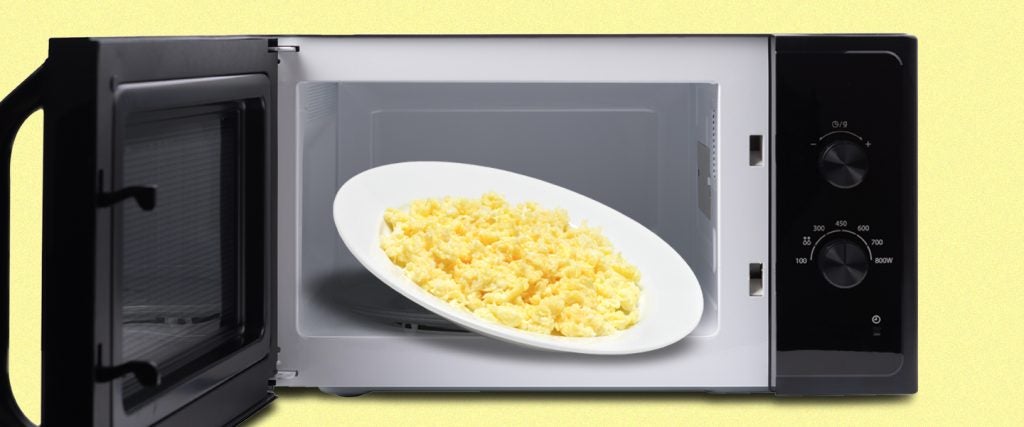Despite being a breakfast staple, I don’t like scrambled eggs. But come time for a big breakfast at my parents’ house, I’m always outvoted and then sent back home with leftovers — including scrambled eggs. I have a hard time eating these fresh from the pan, let alone reheated in the microwave. But just in case I feel bleak and hungry, is there a way to reheat scrambled eggs and make them tasty?
“Reheating scrambled eggs is a difficult and unforgiving process,” says Brian Jupiter, executive chef at Chicago’s Ina Mae Tavern and Chopped champion. Because of eggs’ chemical composition, scrambled eggs are quick to become hard and rubbery with too much heat. At the same time, leftover scrambled eggs “can become rubbery by sitting too long in cold storage as well,” Jupiter explains. “Plus, if your eggs were cooked with a large amount of any kind of fat, you risk a small film developing around them.”
To that end, Jupiter argues that reheating scrambled eggs isn’t worth the effort. “The alternative is simple: Just make a new plate,” he tells me. “Scrambled eggs take a few minutes to make and taste exponentially better than any reheated scrambled eggs.”
But in the case that all you have in your refrigerator are the leftover scrambled eggs you took home after eating breakfast at grandma’s, there are a few rules to follow.
“Refrigerate eggs and egg dishes after preparing, and reheat the leftovers thoroughly to 165 degrees before serving,” explains Laura Bais, owner of Julie’s Cafe Bakery. “This is the only way of reheating eggs that the Food and Drug Administration supports, and the same rule applies if you’re about to reheat moussaka, an omelet or an egg casserole.”
Since you can’t get them too hot, nor can they be too cold, there are a few schools of thought on how to best reheat scrambled eggs. A popular solution is to put them in a covered frying pan at medium heat with butter or cream cheese to preserve their moisture and prevent the eggs from becoming rubbery.
Meanwhile, Caitlin Clark, a food scientist and writer for Robust Kitchen, has a different method for re-moistening them. “Place your eggs in a storage-grade sealed plastic bag and simmer the plastic bag until your eggs are heated through,” she says. “Boiling water cannot get hotter than 212 degrees, so this is a much gentler heating method than a stove, oven or microwave, all of which can overheat the eggs and risk altering their texture.”
And finally, even though it’s his “worst-case scenario,” Jupiter suggests popping the eggs “in the microwave on high for 15- to 20-second intervals — this way, you can catch them before they become total rubber.”
For better or worse, that’s about as eggellent as it gets.

